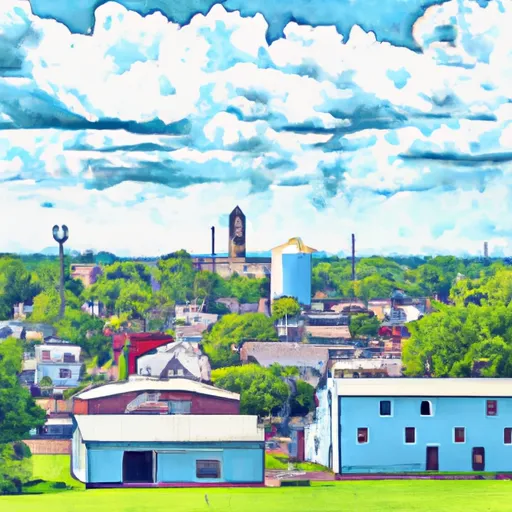°F
°F
mph
Windspeed
%
Humidity











Lafferty is a small village located in Belmont County, Ohio. It is characterized by a humid continental climate with four distinct seasons. Summers are warm and humid, with average temperatures ranging from the mid-70s to low 80s Fahrenheit. Winters are cold and snowy, with temperatures dropping to the mid-20s and occasional sub-zero temperatures.
Hydrologically, Lafferty benefits from its proximity to the Ohio River, which borders the county to the west. The river serves as a vital water resource and supports various recreational activities such as fishing, boating, and kayaking. Additionally, there are several small lakes and ponds scattered throughout the area that provide additional opportunities for fishing and water-based recreation.
Lafferty and its surrounding areas offer numerous outdoor recreation opportunities. The rolling hills and picturesque countryside make it an ideal destination for hiking, camping, and birdwatching. The area also features several state and local parks, providing facilities for picnicking, sports, and playgrounds for families to enjoy. Lafferty's natural beauty and recreational offerings make it an appealing destination for nature enthusiasts and those seeking outdoor adventures.
Weather Forecast
Lafferty receives approximately 1076mm of rain per year, with humidity levels near 81% and air temperatures averaging around 11°C. Lafferty has a plant hardyness factor of 6, meaning plants and agriculture in this region thrive during a short period during spring and early summer. Most plants will die off during the colder winter months.
Regional Streamflow Levels
24
Cubic Feet Per Second
14
Cubic Feet Per Second
5
Cubic Feet Per Second
24
Cubic Feet Per Second
Nearby Camping
| Camping Area | Reservations | Toilets | Showers |
|---|---|---|---|
| West Branch State Park | |||
| Punderson State Park | |||
| Petersburg Boat Landing | |||
| Jefferson Lake State Park | |||
| Guilford Lake State Park | |||
| Cedar Creek State Park |



